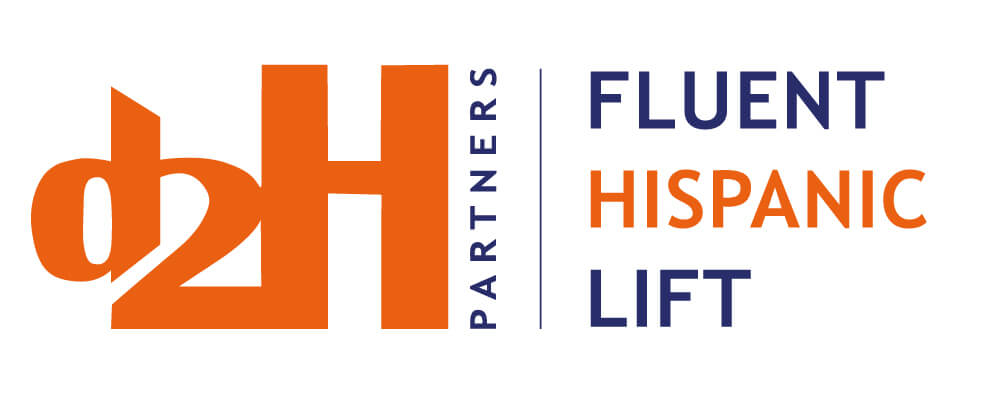The Role of Spanish in Media, Marketing & Entertainment
February 26, 2021 – Spanish is not going away, especially when there are 46MM Spanish-speaking consumers in the US today.
While the topics of acculturation and the growth of the Hispanic market coming from US-born Latinos, have been used to undermine the belief that Hispanics continue to use their native language, the truth is that Spanish language media and advertising continue to thrive in this country. The consumption of Spanish language content is an incredibly huge topic, fraught with all kinds of socio-political implications, not to mention that for agencies like d2H Partners and our recent acquisition, Arenas Group, it is a basic and existential issue.
Latinos make their presence felt
There is no doubt that Hispanics continue to gain visibility and importance in the US. Recent examples of our growing prominence abound, from the all-Latina 2020 Super Bowl halftime show starring Jennifer Lopez and Shakira to the increasingly important, and hard-to-define, Latino voter bloc, to Cardi B’s unapologetic swagger, to leading-man Pedro Pascal, whose ethnicity is almost an afterthought. And this was just in 2020.
In 2021, we have already seen some of that same magic, with Jennifer Lopez’s historical performance at President Biden’s Inauguration, where she sang the American classics “This Land Is Your Land” and “America the Beautiful.” JLo delivered rousing renditions and bridged the two songs by loudly chanting part of the Pledge of Allegiance in Spanish: ¡Una nación, bajo Dios, indivisible, con libertad y justicia para todos! ( One nation, under God, indivisible, with liberty and justice for all.) Her appearance wasn’t a matter of empty symbolism or token representation – by reciting sacred American phrases in Spanish, the Presidential Inauguration provided real cultural inclusion and recognition.
Spanish language inclusion and recognition
However, and as much as I value inclusion and recognition, one key component of Latino identity is our native language, which some say prevents, or limits, more inclusion and participation. I would argue that inclusion, recognition, and participation are not language-dependent. In fact, speaking English and Spanish should be encouraged, as it is the opposite of limiting and is the very expression of inclusion.
Encouragingly, we are seeing signs that Spanish is not dying in the United States. In fact, the continuous use of Spanish among Hispanics of every generation continues to thrive. One obvious example is the explosion of Spanish-language content available in streaming media.
The expansion of Spanish language media
Hispanic media continues to thrive and expand. Recently Univision, which itself was acquired by an investment group led by a former Viacom executive, announced its new streaming venture, Prende TV, and its acquisition of VIX, the leading Spanish-language streamer. Telemundo also continues to grow its digital footprint, and now has 11 YouTube channels, with close to 40 million subscribers.
But in the streaming world, the number one favorite among Latinos continues to be Netflix, which has nearly 300,000 hours of Spanish-language content. Compare this figure to VIX’s 20,000 hours, and it is easy to see why Netflix is so dominant. Popular thinking is that mostly foreign-born immigrants are the key consumers of Spanish-language content and, while this may be true, it excludes the majority of Latinos, who are more likely to be US-born and increasingly English-speaking and/or preferring. But effectively targeting this huge Hispanic segment can be difficult to achieve simply by having “culturally relevant” content in English. The best weapon to successfully target Hispanics continues to be giving them access to quality, Spanish-language content, as proven by Netflix, which has nearly 70% penetration among US Hispanics.
Hispanic marketing implications
At the end of the day, what does this mean for marketers, especially those addressing Hispanic consumers? It’s simple. As with most consumers, Latinos like to see themselves reflected in the world around them, and that includes advertising. Unfortunately, most Latinos continue to feel unrecognized by brands, retailers, and marketers in general. Inclusion begins by addressing this crucial segment respectfully – and not as different or as an underclass.
This brings us back to streaming, which is an important subject for us in two ways. One – streaming is another advertising media vehicle for us to use to reach our intended audience; and two – it is a highly competitive segment that is starting to fragment. Platforms need to grow and retain subscribers. As with most categories, streaming services have heretofore scarcely targeted Latino consumers, yet this segment may be their single largest source of untapped subscribers.
The US Hispanic market – known for our obsessive use of mobile technology – represents a huge marketing potential for the streaming category. This explains Univision’s aggressive strategy and should move more established players like Netflix and Amazon Prime to significantly target Hispanics and do it strategically and consistently to move the needle.
Given that the single most important unifying element among Hispanic consumers is their continued use of Spanish, it then follows that the best way to address Latinos effectively is in their preferred language. As marketers we understand – Spanish is here to stay.
For more discussion about The Role of Spanish in Media, Marketing & Entertainment, check out the infographic in our Market IQ section on our website, www.d2hispanic.com
Patricia Testa – Managing Partner – D2H Partners, LLC – 2021
About d2H Partners – Los Angeles based full-service Hispanic Advertising Agency focused on D2C and B2B Spanish language campaigns targeting immigrant, first-generation and “billenial” Hispanics. d2H specializes in creating, adapting, and delivering targeted messages to Latinos to profitably enculturate your message, media and metrics.
